
How to Use lm 35: Examples, Pinouts, and Specs
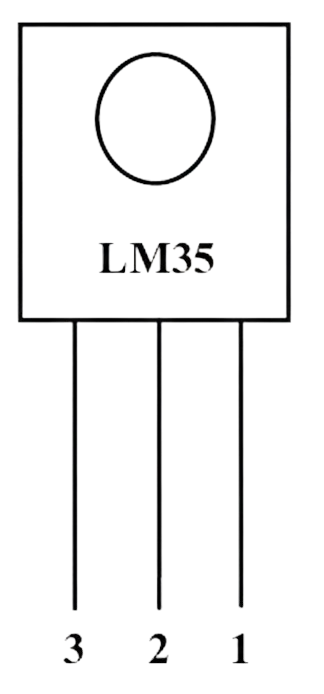
 Design with lm 35 in Cirkit Designer
Design with lm 35 in Cirkit DesignerIntroduction
The LM35 is a precision temperature sensor manufactured by Sensor, with the part ID LM35. It provides an output voltage directly proportional to the Celsius temperature, making it an ideal choice for temperature measurement and control applications. Unlike many other temperature sensors, the LM35 does not require any external calibration or trimming, ensuring high accuracy and reliability. Its linear output and ease of interfacing with microcontrollers make it a popular choice for a wide range of projects.
Explore Projects Built with lm 35
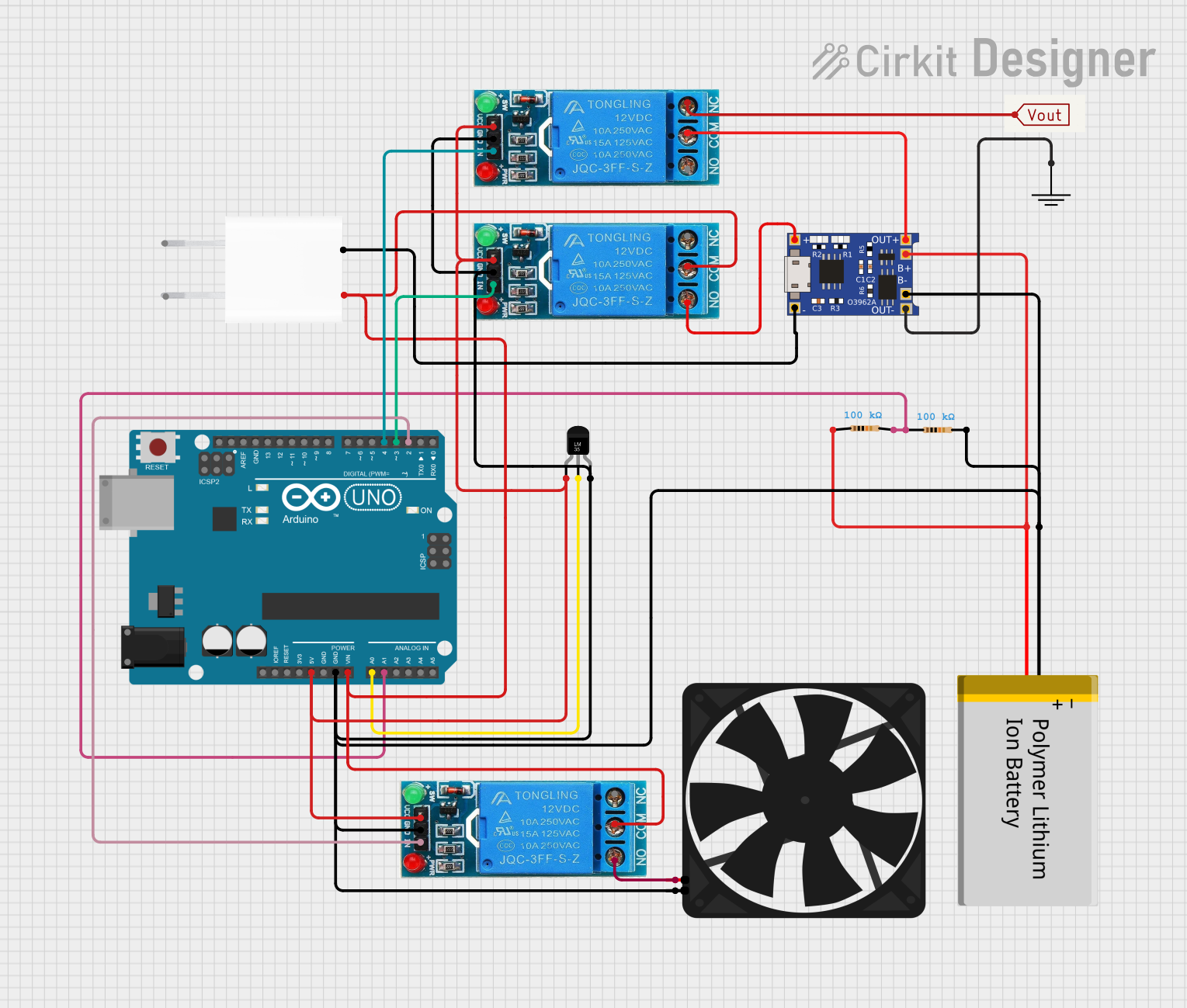
 Open Project in Cirkit Designer
Open Project in Cirkit Designer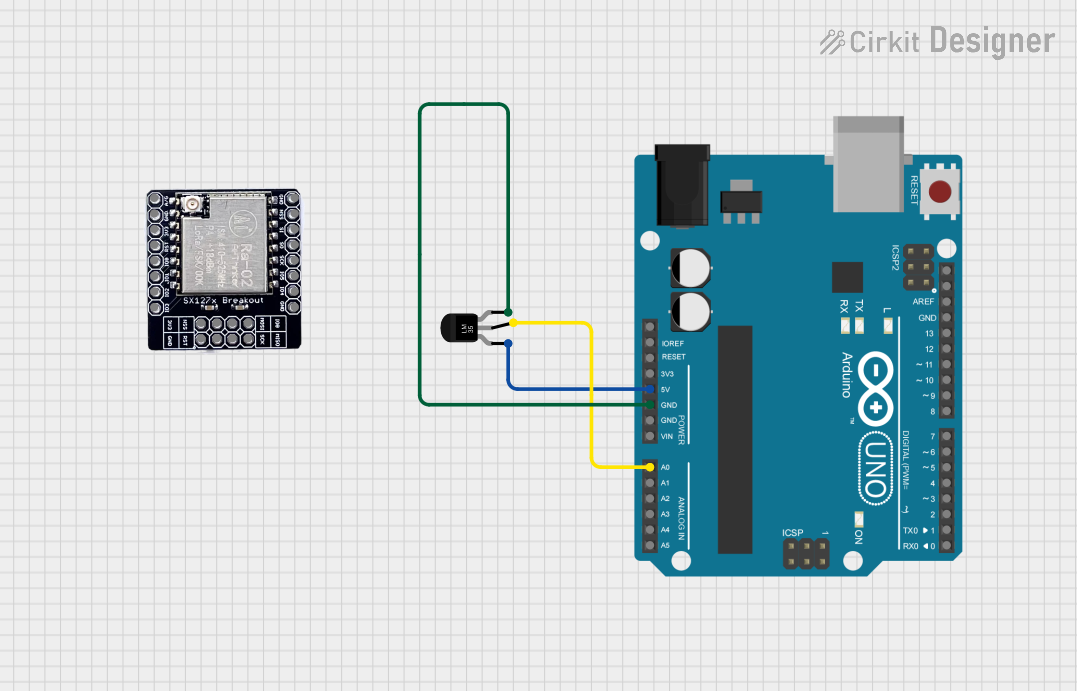
 Open Project in Cirkit Designer
Open Project in Cirkit Designer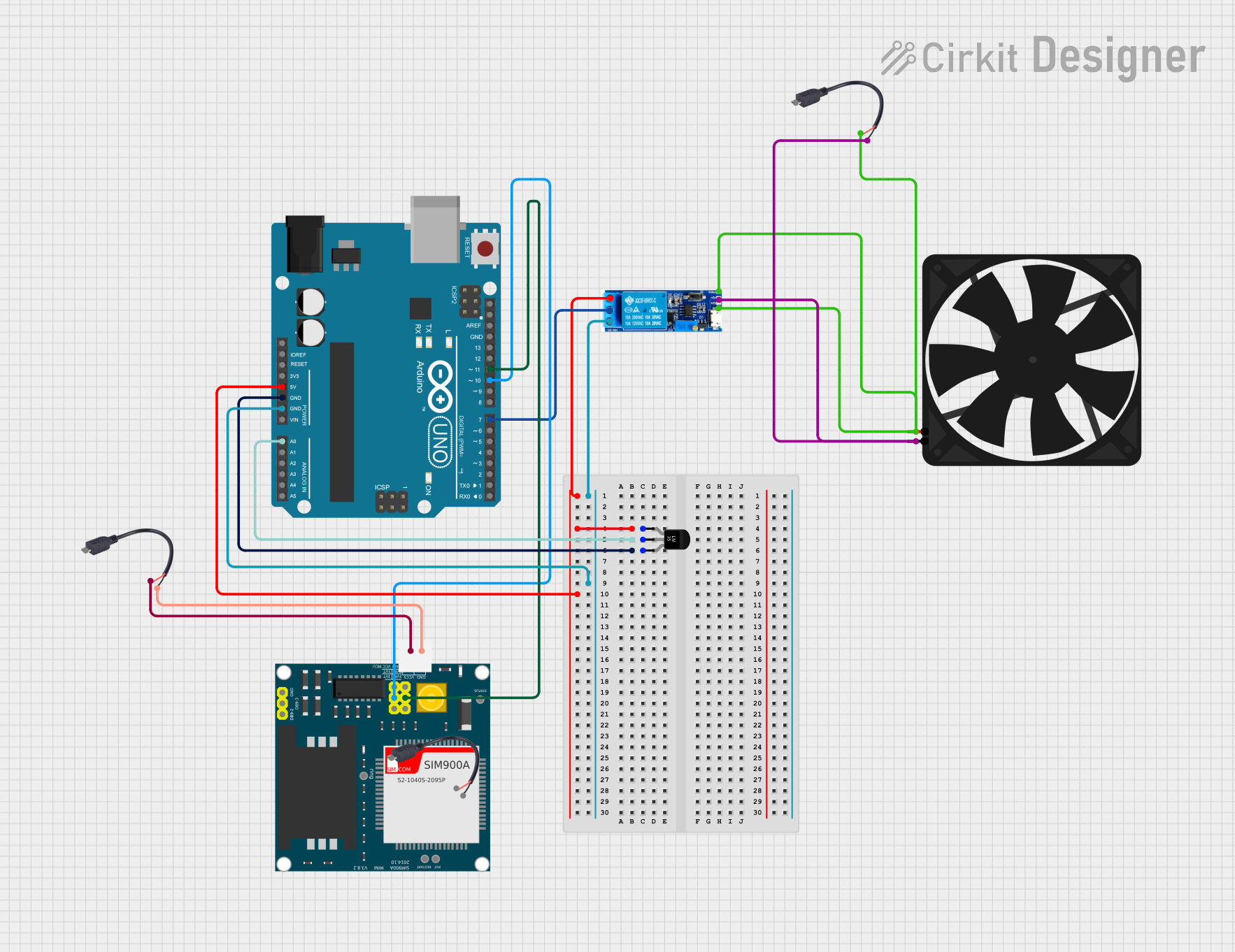
 Open Project in Cirkit Designer
Open Project in Cirkit Designer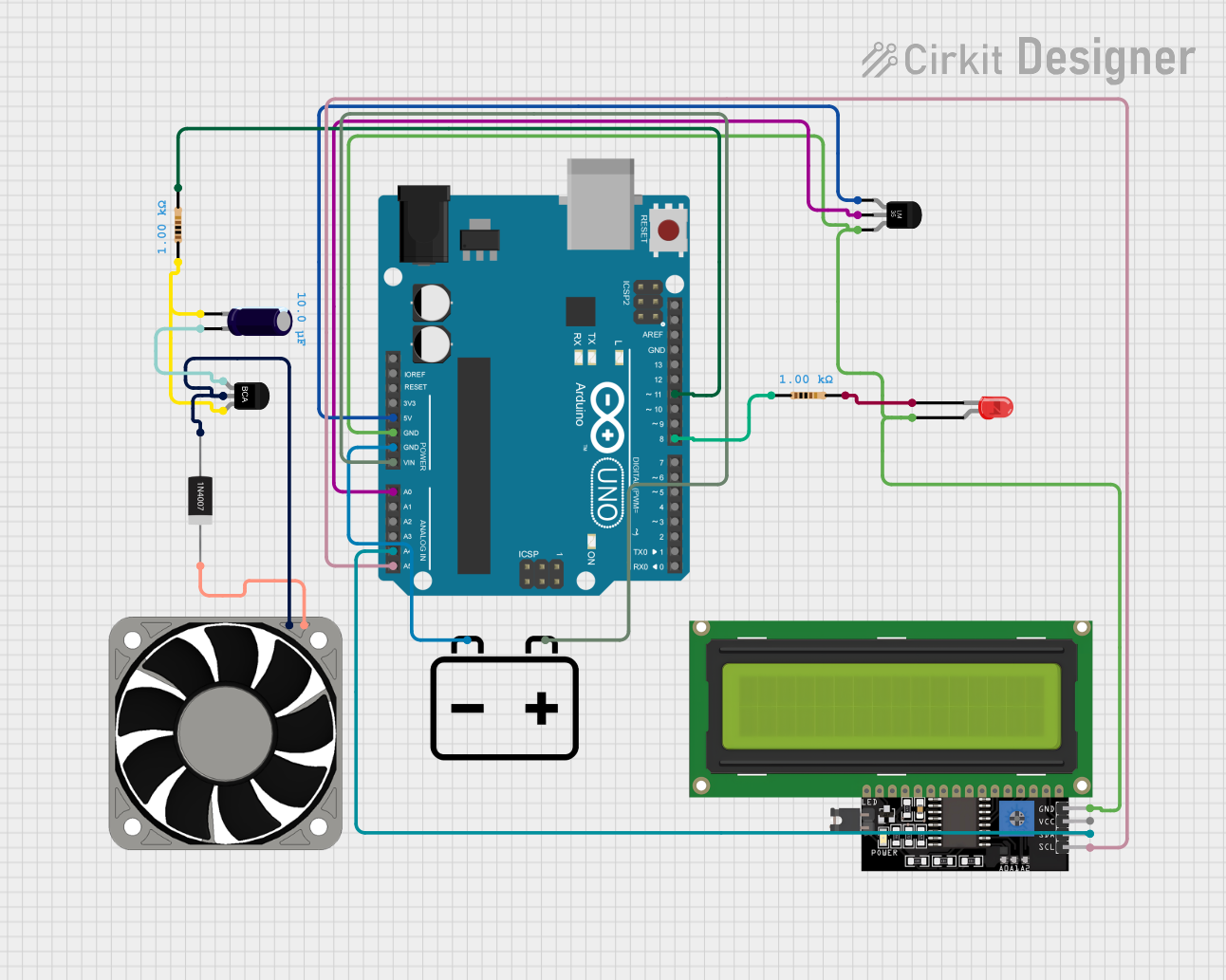
 Open Project in Cirkit Designer
Open Project in Cirkit DesignerExplore Projects Built with lm 35

 Open Project in Cirkit Designer
Open Project in Cirkit Designer
 Open Project in Cirkit Designer
Open Project in Cirkit Designer
 Open Project in Cirkit Designer
Open Project in Cirkit Designer
 Open Project in Cirkit Designer
Open Project in Cirkit DesignerCommon Applications
- HVAC systems for temperature monitoring and control
- Weather stations and environmental monitoring
- Industrial process control
- Home automation systems
- Medical devices for temperature measurement
Technical Specifications
The LM35 is designed to operate efficiently in a variety of environments. Below are its key technical details:
| Parameter | Value |
|---|---|
| Supply Voltage (Vcc) | 4V to 30V |
| Output Voltage Range | 0V to 1.5V (for 0°C to 150°C) |
| Temperature Range | -55°C to +150°C |
| Accuracy | ±0.5°C (at 25°C) |
| Output Scale Factor | 10mV/°C |
| Current Consumption | 60 µA (typical) |
| Load Impedance | ≥ 10 kΩ |
Pin Configuration
The LM35 has a 3-pin TO-92 package, as shown below:
| Pin Number | Pin Name | Description |
|---|---|---|
| 1 | Vcc | Positive power supply (4V to 30V) |
| 2 | Vout | Analog output voltage proportional to temperature |
| 3 | GND | Ground (0V reference) |
Usage Instructions
The LM35 is simple to use in a circuit, requiring minimal external components. Below are the steps and considerations for using the LM35:
Connecting the LM35
- Power Supply: Connect the Vcc pin to a stable power supply (4V to 30V). For most microcontroller applications, 5V is commonly used.
- Ground: Connect the GND pin to the ground of the circuit.
- Output: Connect the Vout pin to an analog input pin of your microcontroller or to a voltmeter for direct temperature readings.
Important Considerations
- Output Voltage: The LM35 outputs 10mV per degree Celsius. For example, at 25°C, the output voltage will be 250mV.
- Load Impedance: Ensure the load impedance on the Vout pin is at least 10 kΩ to maintain accuracy.
- Temperature Range: The LM35 can measure temperatures from -55°C to +150°C, but ensure the sensor is not exposed to conditions beyond its specified limits.
- Noise Filtering: For noisy environments, consider adding a 0.1 µF capacitor between Vout and GND to stabilize the output.
Example: Interfacing LM35 with Arduino UNO
Below is an example of how to connect and read temperature data from the LM35 using an Arduino UNO:
Circuit Diagram
- Connect the LM35's Vcc pin to the Arduino's 5V pin.
- Connect the GND pin to the Arduino's GND.
- Connect the Vout pin to the Arduino's analog input pin (e.g., A0).
Arduino Code
// LM35 Temperature Sensor Example with Arduino UNO
// Reads temperature in Celsius and prints it to the Serial Monitor
const int sensorPin = A0; // Analog pin connected to LM35 Vout
float temperatureC; // Variable to store temperature in Celsius
void setup() {
Serial.begin(9600); // Initialize serial communication at 9600 baud
}
void loop() {
int sensorValue = analogRead(sensorPin); // Read analog value from LM35
// Convert the analog value to voltage (5V reference, 10-bit ADC)
float voltage = sensorValue * (5.0 / 1023.0);
// Convert voltage to temperature in Celsius (10mV per °C)
temperatureC = voltage * 100.0;
// Print the temperature to the Serial Monitor
Serial.print("Temperature: ");
Serial.print(temperatureC);
Serial.println(" °C");
delay(1000); // Wait 1 second before the next reading
}
Best Practices
- Place the LM35 in a location with good airflow for accurate temperature readings.
- Avoid placing the sensor near heat sources or in direct sunlight, as this may affect accuracy.
- Use proper decoupling capacitors if the power supply is noisy.
Troubleshooting and FAQs
Common Issues
Incorrect Temperature Readings
- Cause: Improper connections or insufficient load impedance.
- Solution: Verify all connections and ensure the load impedance on the Vout pin is at least 10 kΩ.
No Output Voltage
- Cause: Power supply not connected or insufficient voltage.
- Solution: Ensure the Vcc pin is connected to a stable power supply within the specified range (4V to 30V).
Fluctuating Output
- Cause: Electrical noise or unstable power supply.
- Solution: Add a 0.1 µF capacitor between Vout and GND to filter noise.
Overheating
- Cause: Operating the LM35 beyond its temperature or voltage limits.
- Solution: Ensure the sensor is used within its specified temperature and voltage ranges.
FAQs
Q1: Can the LM35 measure negative temperatures?
Yes, the LM35 can measure temperatures as low as -55°C. However, for negative temperatures, the output voltage will be below 0V, which may require additional circuitry to read.
Q2: Can I use the LM35 with a 3.3V microcontroller?
Yes, the LM35 can operate with a supply voltage as low as 4V. However, if your microcontroller uses a 3.3V ADC reference, you may need to adjust the calculations accordingly.
Q3: How do I extend the cable length for the LM35?
Use shielded cables to reduce noise and interference. Additionally, place a decoupling capacitor (e.g., 0.1 µF) near the sensor to stabilize the output.
Q4: Is the LM35 waterproof?
No, the standard LM35 is not waterproof. For outdoor or wet environments, consider using a waterproof housing or a specialized waterproof temperature sensor.
By following this documentation, you can effectively integrate the LM35 into your projects for accurate and reliable temperature measurements.